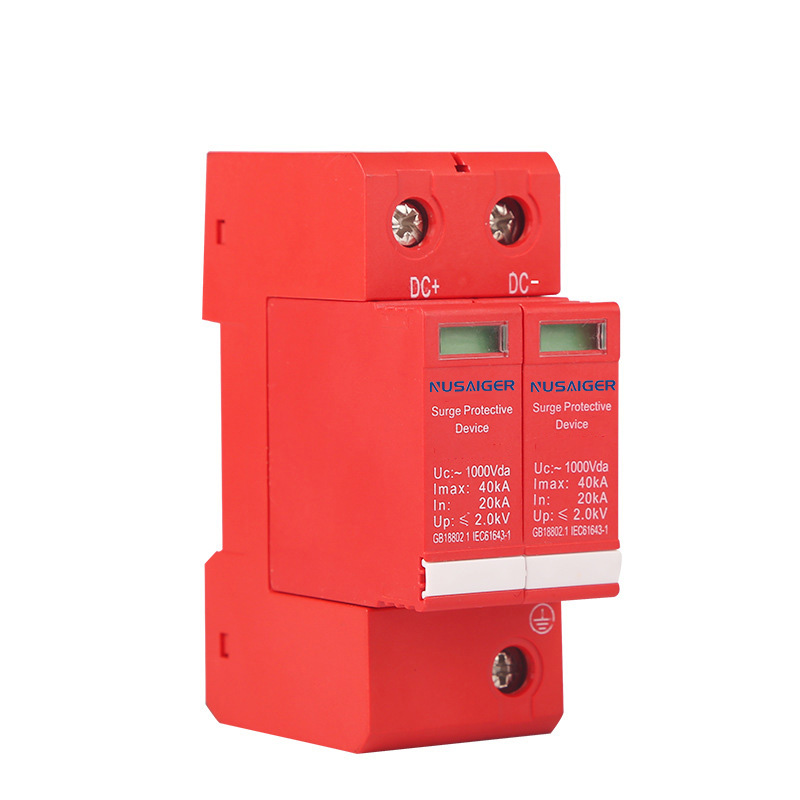Surge Protective Devices: Comprehensive Guide to Types, Installation, and Maintenance
1. Introduction
Electrical surges are unpredictable events that can cause extensive damage to devices and systems.
A Surge Protective Device (SPD) is an essential safeguard against these transient voltage spikes.
This guide provides a deep dive into SPDs, covering types, installation procedures, maintenance practices, and real-world applications.
Understanding SPDs is critical for homeowners, facility managers, and industrial engineers to ensure equipment safety, minimize downtime, and comply with electrical standards.
2. How SPDs Work
SPDs operate by diverting excess electrical energy away from connected devices to prevent damage.
They commonly use three core technologies:
- Metal Oxide Varistors (MOVs): Absorb high-energy surges and clamp voltages.
- Gas Discharge Tubes (GDTs): Conduct high surge currents safely to ground during extreme events.
- Transient Voltage Suppression (TVS) Diodes: Provide fast response times for low-energy transients.
When a surge occurs, the SPD immediately redirects the excessive current to the grounding system, allowing normal operations to continue.
SPDs reset automatically after the surge passes, ready for the next event.
3. Classification of SPDs
SPDs are classified according to their location and the type of surges they address.
Adhering to IEC/EN 61643 standards, the common types are:
3.1 Type 1 SPDs
Installed at the service entrance, Type 1 SPDs protect against high-energy surges from direct lightning strikes or utility faults.
They are robust and can handle high surge currents.
3.2 Type 2 SPDs
Installed at distribution boards, Type 2 SPDs defend against indirect lightning and switching surges.
They are most common in residential, commercial, and light industrial installations.
3.3 Type 3 SPDs
Type 3 SPDs are installed close to sensitive equipment such as computers, medical devices, and servers.
They provide fine protection, often used with Type 1 or Type 2 SPDs in layered protection schemes.
3.4 Combined SPDs
Some devices combine features of multiple types (e.g., Type 1+2, Type 2+3), offering comprehensive protection in a single unit.
4. Importance of Surge Protection
The advantages of installing SPDs are numerous and significant:
- Protection of Devices: Safeguards computers, servers, home appliances, and industrial machines.
- Fire Safety: Reduces the risk of fires caused by overloaded or overheated wiring.
- System Reliability: Minimizes downtime in commercial and industrial operations.
- Cost Efficiency: Prevents expensive replacements and repairs of damaged equipment.
- Regulatory Compliance: SPDs help meet international safety and electrical standards.
5. Causes of Electrical Surges
Surges can originate from multiple sources:
- Lightning Strikes: Both direct and indirect strikes can induce powerful voltage spikes.
- Utility Grid Switching: Restoring power or switching operations often creates transient spikes.
- Motor and Appliance Cycling: Turning large devices on and off generates switching surges.
- Faulty Wiring: Poor grounding and damaged cables increase surge vulnerability.
- Electrostatic Discharge: Static electricity can harm sensitive electronics even at low energy.
6. Key Selection Criteria
Selecting the appropriate SPD requires consideration of the following factors:
- Nominal Discharge Current (In): Number of surges the SPD can handle without failure.
- Maximum Discharge Current (Imax): Peak surge current the SPD can safely handle.
- Voltage Protection Level (Up): Maximum voltage allowed to pass to connected equipment.
- Maximum Continuous Operating Voltage (MCOV): Ensures the SPD can sustain normal voltage.
- Response Time: Faster SPDs offer better protection for sensitive electronics.
- End-of-Life Indicators: Visual or remote alerts indicate SPD failure or replacement requirement.
7. Installation Best Practices
Proper installation is vital for SPD effectiveness:
- Mount SPDs as close as possible to the main distribution panel to minimize lead length.
- Ensure proper grounding and bonding.
- Use conductors of adequate size to handle surge currents safely.
- Coordinate multiple SPD types for layered protection.
- Follow local electrical and safety codes for compliance.
8. Maintenance and Lifespan
SPDs degrade over time and require monitoring:
- Regularly inspect indicator LEDs or status windows.
- Replace SPDs after major surge events.
- Document replacement cycles for critical systems.
- Consider SPDs with remote monitoring capabilities for industrial or data center applications.
9. Layered Protection Approach
For optimal protection, use a layered strategy:
- Type 1 at the service entrance.
- Type 2 at distribution boards.
- Type 3 near sensitive equipment.
This ensures that surges are mitigated at multiple levels, reducing the risk of equipment damage.
10. Applications Across Different Sectors
- Residential: Protecting appliances, entertainment systems, security cameras, and networking equipment.
- Commercial: Safeguarding office electronics, servers, and data centers.
- Industrial: Protecting automation systems, motors, sensors, and manufacturing machinery.
- Renewable Energy: SPDs in PV systems, wind turbines, and battery storage prevent costly equipment damage.
- Telecommunications: Ensures uptime in base stations, fiber networks, and communication hubs.
11. Common Mistakes to Avoid
- Installing SPDs far from panels, increasing lead inductance.
- Improper grounding and bonding.
- Failing to coordinate multiple SPD types.
- Using SPDs with insufficient surge ratings.
- Neglecting to replace SPDs after major surges.
12. Future Trends in SPD Technology
- Smart SPDs with real-time monitoring and remote alerts.
- Hybrid SPDs combining MOVs, GDTs, and TVS for superior protection.
- Compact designs for space-constrained and modern electronics.
- AI-assisted predictive maintenance for industrial systems.
13. Conclusion
SPDs are essential devices that protect electrical systems and connected equipment from unpredictable surges.
Proper selection, installation, maintenance, and a layered protection strategy ensure maximum safety and cost savings.
Homeowners, commercial facilities, and industrial operations can all benefit from reliable surge protection solutions.



